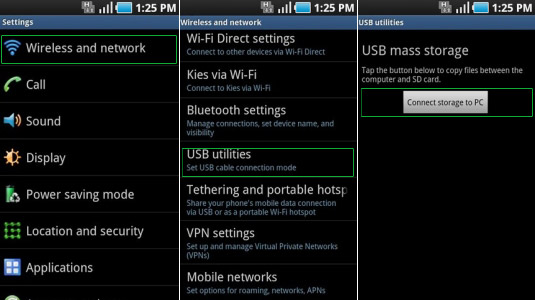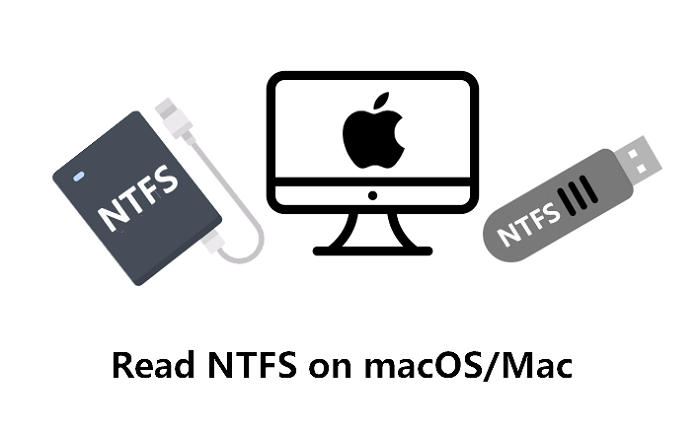
- #Enable usb mass storage for android with mac sierra android
- #Enable usb mass storage for android with mac sierra download
- #Enable usb mass storage for android with mac sierra windows
That’s it! To check whether you have successfully turned off Developer options using ADB command or not, go to device settings.
#Enable usb mass storage for android with mac sierra android
As soon as you hit the Enter key on your keyboard, Developer options will be turned off on your Android device. Settings put global development_settings_enabled 0 Type adb shell, press the Enter key, and then issue the following command to turn off the Developer options on your Android device. Connect your device to the computer via a USB cable. Open a command window on your computer. However, if you aren’t able to navigate to the device settings and want to turn it off, there is an ADB command for that too. Turn off Developer Options using ADB Commandĭisabling the Developer options on Android on a normal device is very easy. Now go to Settings > Developers options and you will find that USB debugging has been disabled. Connect your device to the computer and execute the following command after running adb shell. Launch the Command Prompt or open a PowerShell window. This should work on all Android devices regardless of the manufacturer. 
I tested it on Samsung Galaxy Note 10 Plus, Redmi K20 Pro, Galaxy S20, and OnePlus 8 successfully. Well, enabling USB debugging on a device with a locked or broken screen might not be possible but you can easily disable is using an ADB command if it’s already enabled. If you are somehow able to see the RSA notification on your phone’s display, tap on OK. Your phone will boot up with USB debugging enabled but there’s a catch here! Next time, when you try to run ADB commands, you’ll still have to allow USB debugging or verify the RSA key fingerprint on your phone. You can now reboot your phone to the system using the following command. If you followed every step carefully and didn’t miss anything, USB debugging should be enabled on your device.
Save the file after you have made the above changes to build.prop and push it back to your phone using the following command.Īdb push " C:\Users\Technastic\Desktop/build.prop" /system/. Open the build.prop file with a text editor like NotePad++ and add the following lines to it. #Enable usb mass storage for android with mac sierra download
It’s time now to download the build.prop file of your device to your PC.Īdb pull /system/build.prop C:\Users\Technastic\Desktop\. Now use the adb push command to send it back to your device.Īdb push " C:\Users\Technastic\Desktop/" /data/property Open the file with a text editor and edit it to “ mtp,adb” and save it. Don’t forget to replace the location where you want to save the pulled file with yours.Īdb pull /data/property/ C:\Users\Technastic\Desktop\ To do that execute the following command.  Now, you have to pull the file from your phone to the PC. After that, execute the mount data and mount system commands to mount the respective directories on your device. Now type adb shell and hit the Enter key. (Lucky you! :D) I could not get past this step. If you get the device ID as an alphanumeric value in the command window, it means that your ADB can detect your device in the Recovery Mode. Anyway, type the following command and press the Enter key. In case you have set up system-wide ADB and Fastboot, you can launch the command window from any screen of your PC.
Now, you have to pull the file from your phone to the PC. After that, execute the mount data and mount system commands to mount the respective directories on your device. Now type adb shell and hit the Enter key. (Lucky you! :D) I could not get past this step. If you get the device ID as an alphanumeric value in the command window, it means that your ADB can detect your device in the Recovery Mode. Anyway, type the following command and press the Enter key. In case you have set up system-wide ADB and Fastboot, you can launch the command window from any screen of your PC. #Enable usb mass storage for android with mac sierra windows
Open the ‘ platform-tools‘ folder and launch a command window by clicking on File > Open Windows PowerShell in the folder window. Download the latest SDK Platform-tools.zip and extract it. Boot your Android device into the Recovery Mode. The method described below will work only on Android devices with an unlocked bootloader. 
Now, let’s come to the steps to enable USB debugging using ADB commands on devices with a broken or damaged screen.

If you still want to give it a shot, follow the instructions. Obviously, I turned off the Developer options on my phone before following his steps. I am not sure if the allegedly working trick described Pantasio will work for you or not, but it certainly didn’t work on my unlocked Samsung Galaxy Note 10 Plus. Github user Pantasio claims he was able to enable USB debugging via Recovery Mode using ADB commands. The oem unlock command can unlock your phone’s bootloader but in doing so, it’ll also perform a factory data reset. You can boot your device into the Fastboot Mode and try Please note that Fastboot doesn’t require USB debugging enabled. If you have a rooted Android device and have TWRP recovery installed on it, there are better chances that you can successfully mount System and Data partitions using ADB commands. However, if you try the ADB shell commands, you’ll get the following error in return.








 0 kommentar(er)
0 kommentar(er)
